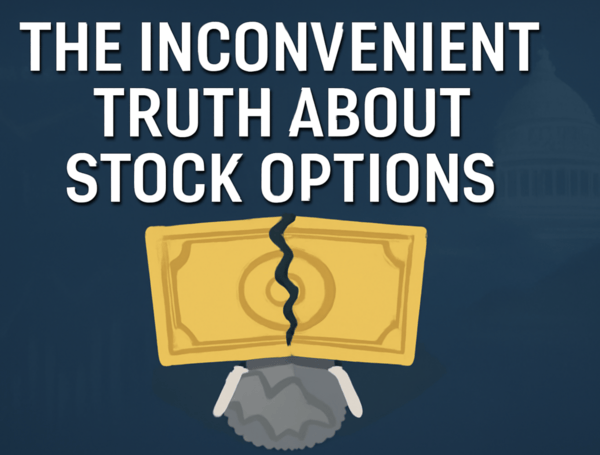
There’s probably no bigger myth in the startup and venture capital world than the idea that stock options are a golden ticket to generational wealth for employees who sign up to slave away at below-market salaries. The narrative is endlessly seductive—work hard, join a rocket ship early, and destiny will hand you your freedom. But the data delivers a far less pollyanna picture.
Especially in the early days before priced round capital is injected, you are going to have to sell co-founders and early employees on your vision. A vision that will ultimately deliver great wealth onto them in exchange for their sacrifice, someday and somewhere over the rainbow. That sales pitch tends to work better on recent college grads then on more mature, life-experienced people who are probably more realistic about it, and more interested in the other intagible benefits of working on a startup.
Let’s start with your own likely reality first. Statistically, founders reach their first exit event after 3.5 startups. So if you’re on your first or second startup, you’re probably still on your practice rounds. That’s why I often recommend to first-time wantrepreneurs that they think about joining a few startups led by experienced, previously-exited founders first, before trying to ski down the black diamond run on their own. It’s also one of many reasons to recruit a proven CEO to the team, and stepping aside to the more permanent role of chairman, founder and C?O. If you can find someone who has previously returned capital to investors in your specific industry it’ll make fundraising 100x easier.
So if that’s the risk to you as a co-founder of your founders stock ever materializing into real wealth, just imagine the risk to employees you recruit by dangling stock options in front of them being that much higher.
Here’s a fact nobody likes to say out loud: roughly 77% of vested employee stock options simply never get exercised. They revert to the option pool because employees either leave early, or the shares are worthless at the time they think about exercising.
And even when employees do exercise, the odds of any kind of meaningful windfall are painfully slim. Only about 7% of startups ever have an exit that matters to early founders and employees—99% of the time through an acquisition, and a teensy tiny percentage of the time through an IPO. The jackpot unicorns are even rarer, less than 1%. That means most options are just paper promises that never pay off.
For you as a founder, that’s a double-edged sword. The stock options you grant can’t be magical wealth generators for everyone, but they do signal whether your venture actually has the fundamentals to scale and exit. If options aren’t “working,” maybe your company is stuck, or your model isn’t catching fire—and you should know that early.
Keep in mind that the only people guaranteed to make money on your stock option plan are the attorney that created it and the accountants and auditors that touch it every year. The generally agreed statistic is that only 3% of employee stock options ever end up "above water."
If you want your team’s options to have a fighting chance of payout, you need to start by ruthlessly vetting yourself and your startup:
If you can’t answer these questions clearly and brutally honestly, all those stock options you’re granting are empty promises.
Some boards are more amenable to this than others, and there are always tax considerations for the individual involved, but one way to improve the odds is to create programs where at least senior management can get loans from the company to exercise their vested options. This converts those options to votable shares, and starts the clock on QSBS tax treatment.
In the event that a valuable co-founder or early employee has to leave the company before the exit event, boards will often approve an extension period of up to several years for them to exercise their options, so they don't lose them after the standard 90-day post-termination exercise period. This is especially helpful in situations where it was the company's circumstances that forced the exit of the employee, and not their own decision to depart.
When negotiating term sheets with investors, do not underestimate the impact of "liquidation preference" clauses that give investors a much greater slice out of the pie in an exit than mere valuations would imply. If a VC gets a 3x liquidation preference before Common Stock even gets a taste, it may mean that most, if not all but perhaps the very earliest employees, wind up with stock options that are "under water" and worthless.
The old startup fairy tale — join early, work cheap, get rich on stock options at exit — is dead. If you want options to be real wealth for your team, you have to build a company worthy of a meaningful exit.
For founders, that means targeting:
Because at the end of the day, stock options are your equity story’s final exam. If you can’t pass it, your team won’t either.
The takeaway? Don’t treat employee options as magical fairy dust to sprinkle over hopes and dreams. Treat them as your startup’s report card. Build right, and maybe your options become valuable. But don’t kid yourself that’s automatic—no matter how many PowerPoint decks say otherwise.
Want a deeper dive into what really makes a startup venture-scale? Check out my full no-BS breakdown on How To Know If Your Startup Is Venture Scale. This includes a section about all the other good reasons to create and join startups that, at the end of the day, probably trump the economic windfall expectations. My favorite? Who you work with is a lot more important than what you work on.